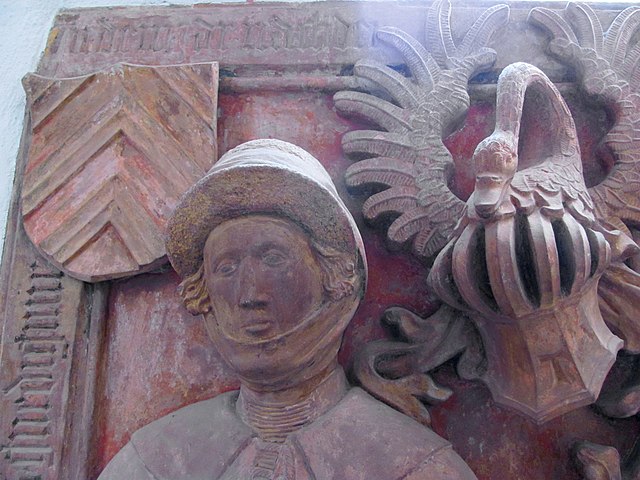The County of Hanau-Lichtenberg was a territory in the Holy Roman Empire. It emerged between 1456 and 1480 from a part of the County of Hanau and one half of the Barony of Lichtenberg. Following the extinction of the counts of Hanau-Lichtenberg in 1736 it went to Hesse-Darmstadt, minor parts of it to the Hesse-Cassel. Its centre was in the lower Alsace, the capital first Babenhausen, later Buchsweiler.
Boundary marker between the Duchy of Lorraine and Hanau-Lichtenberg, installed in 1608
The portion of Hanau-Lichtenberg (in blue) within Alsace at the time it was annexed by France in 1680
Philip I (the Elder), progenitor of the line of Hanau-Lichtenberg on his epitaph in the municipal church of St. Nicholas in Babenhausen
Lichtenberg Castle from a Merian copperplate
The County of Hanau was a territory within the Holy Roman Empire, evolved out of the Lordship of Hanau in 1429. From 1456 to 1642 and from 1685 to 1712 it was divided into the County of Hanau-Münzenberg and the County of Hanau-Lichtenberg. After both lines became extinct the County of Hanau-Münzenberg was inherited by the Landgraviate of Hesse-Kassel, the County of Hanau-Lichtenberg by the Landgraviate of Hesse-Darmstadt in 1736.
County of Hanau by Friedrich Zollmann 1728.
Reinhard III, second 2nd count of Hanau
Philipp I (the younger), 3rd count of Hanau
Friedrich Casimir, 4th count of Hanau








